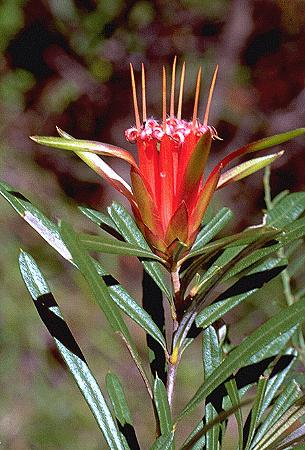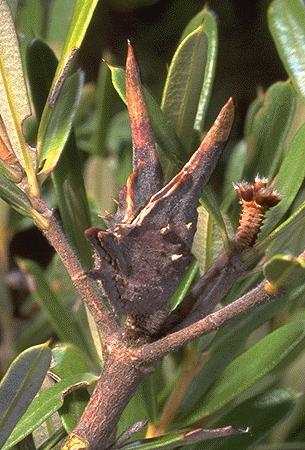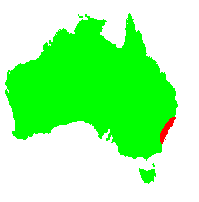General Description:
Lambertia is a small genus of about 11 species, all but one of which occur in the south of Western Australia.
Lambertia formosa is the only species in the genus to occur in eastern Australia. It is a small to medium shrub, often no more than a metre or so high but sometimes reaching 2 metres. It has stiff, linear-shaped leaves 0.3 mm wide by about 50 mm long with a sharp tip. The red, tubular-shaped flowers occur at the ends of the branches in groups of 7, each cluster being about 50 mm in length. Flowering usually occurs in winter and spring but some flowers are often present at other times of the year. The flowers contain nectar and a frequented by honey eating birds.
After flowering, small, horned seed capsules develop and these give rise to the common name of “mountain devil”. However, the species is not confined to mountain areas and is often seen in bushland throughout the Sydney region including coastal heaths. Each seed capsule contains 2 seeds.
This is a popular plant in cultivation but can be difficult to establish. It requires moist, well drained soils, preferably of a light texture such as sandy loam. It appreciates some protection from full sun but should not be grown in heavy shade. It is tolerant of at least moderate frosts. Lambertia formosa possesses a lignotuber (which it regenerates from after bushfires), which means it can be pruned quite hard in cultivation. This has been said to promote subsequent flowering.
Propagation may be carried out from seed which can be slow to germinate. Cuttings may also be slow to strike – best results are achieved using hardened, current season’s growth..

Flowers of Lambertia formosa
Photo: Brian Walters

Fruit of Lambertia formosa
Photo: Brian Walters
 Australian Native Plants Society (Australia)
Australian Native Plants Society (Australia)